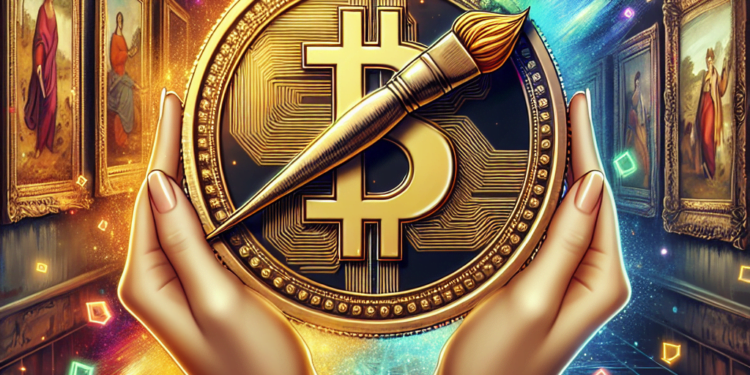Introduction
The art industry, once perceived as static and exclusive, is being shaken up. The digital era combined with the surge of cryptocurrencies have given birth to a novel and booming trend: Non-Fungible Tokens (NFTs) in the art world. While the topic has been on fire in the crypto community and progressive art circles, many are still looking for a clear understanding of what NFT art means. Let’s dive in.
What are NFTs?
Non-fungible tokens (NFTs) are unique digital assets that are linked to cryptocurrencies and stored on a blockchain. Unlike cryptocurrencies like Bitcoin or Ethereum, NFTs cannot be exchanged on a like-for-like basis as each one has a distinct value. These unique properties allow NFTs to be used as proof of authenticity and ownership within the digital realm, making them particularly useful for digital art.
NFTs and Art
How does a non-tangible digital token tied to an artwork revolutionize the art industry? NFTs have the potential to democratize art by allowing artists to gain control over their work. With NFTs, artists can sell their art directly to consumers via blockchain platforms, without needing a gallery or auction house. Additionally, NFTs contain smart contracts that could allow an artist to receive royalties each time their work is resold. This is a game-changer as many artists typically don’t see any of the profit when their work appreciates in value.
Noteworthy NFT Artists
The boundaries of traditional art have been blurred with the advent of NFTs. Many digital artists have found success through the NFT trend. For instance, Mike Winkelmann, also known as Beeple, made news when his digital artwork “Everydays: The First 5000 Days” sold for a staggering $69.3 million in an online auction at Christie’s as an NFT. Similarly, Grimes sold $6 million worth of her NFT-based art in less than 20 minutes.
NFTs: A Sustainability Concern?
While NFTs could greatly benefit artists, they also carry a significant environmental footprint due to the energy-intensive process involved in mining and maintaining blockchain technology. This has sparked some criticism and debate about the sustainability of NFTs, especially as the world faces the ongoing threat of climate change. However, advocates argue that the environmental impact could be mitigated through renewable energy sources and more efficient blockchain infrastructures.
Conclusion
The NFT trend is indeed revolutionizing the art industry. It has the potential to empower artists, break the barriers to art accessibility, and massively transform the way we perceive and value art. Despite some concerns about its environmental impact, it’s safe to say that NFTs are here to stay and could drastically change not just the art world, but also other industries like real estate, gaming, and more.
If you’re interested in knowing more about the fascinating intersection of art, cryptocurrency, and technology, make sure to check out DeFi Daily News for more trending news articles like this!
Frequently Asked Questions (FAQs)
1. What is an NFT?
An NFT, or Non-Fungible Token, is a unique digital asset stored on a blockchain. Each token proves the authenticity, originality, and ownership of a specific digital item such as an artwork, music file, or even a tweet.
2. Can NFTs be duplicated?
The digital item linked to an NFT can be copied or duplicated, like a digital painting or song. However, the NFT itself, which signifies originality, cannot be duplicated. It’s like owning an original painting even if there are thousands of prints of the same paint.
3. Are NFTs only for digital art?
Although there’s a current trend for NFT digital art, NFTs can be used for any digital property. This encompasses music, virtual real estate, virtual goods in video games, domain names, and more. Even tweets have been tokenized and sold!
4. How do I buy or sell NFTs?
NFTs can be bought/sold on various online marketplaces/platforms. You would generally need a digital wallet and some cryptocurrency (Ethereum is commonly used) to interact with these platforms.



















